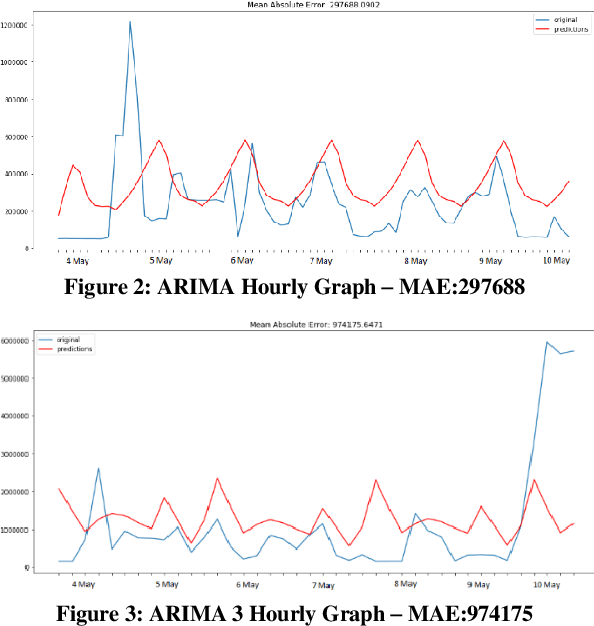Hyeok Kim
Comparative Analysis of Time Series Forecasting Approaches for Household Electricity Consumption Prediction
Jul 03, 2022



Abstract:As a result of increasing population and globalization, the demand for energy has greatly risen. Therefore, accurate energy consumption forecasting has become an essential prerequisite for government planning, reducing power wastage and stable operation of the energy management system. In this work we present a comparative analysis of major machine learning models for time series forecasting of household energy consumption. Specifically, we use Weka, a data mining tool to first apply models on hourly and daily household energy consumption datasets available from Kaggle data science community. The models applied are: Multilayer Perceptron, K Nearest Neighbor regression, Support Vector Regression, Linear Regression, and Gaussian Processes. Secondly, we also implemented time series forecasting models, ARIMA and VAR, in python to forecast household energy consumption of selected South Korean households with and without weather data. Our results show that the best methods for the forecasting of energy consumption prediction are Support Vector Regression followed by Multilayer Perceptron and Gaussian Process Regression.
Employing Genetic Algorithm as an Efficient Alternative to Parameter Sweep Based Multi-Layer Thickness Optimization in Solar Cells
Sep 26, 2019



Abstract:Conventional solar cells are predominately designed similar to a stacked structure. Optimizing the layer thicknesses in this stack structure is crucial to extract the best efficiency of the solar cell. The commonplace method used in optimization simulations, such as for optimizing the optical spacer layers' thicknesses, is the parameter sweep. Our experiments show that the introduction of genetic algorithm based method results in a significantly faster and accurate search method when compared to brute-force parameter sweep method in both single and multi-layer optimization. While other sweep methods can also outperform the brute-force method, they do not consistently exhibit $100\%$ accuracy in the optimized results like our genetic algorithm. Our best case scenario was observed to utilize 57.9% less simulations than brute-force method.
 Add to Chrome
Add to Chrome Add to Firefox
Add to Firefox Add to Edge
Add to Edge